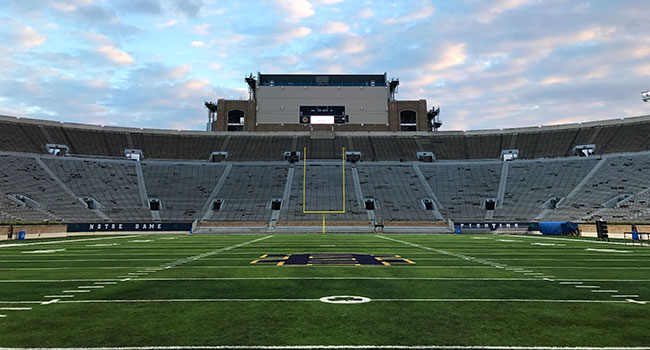
University of Notre Dame to Use Metal Detectors at Athletic Events
The University of Notre Dame announced Thursday that walk-through metal detectors will be used at all gates of Notre Dame Stadium during the 2019 football season.
- By Jessica Davis
- April 12, 2019
The University of Notre Dame announced Thursday that walk-through metal detectors will be used at all gates of Notre Dame Stadium during the 2019 football season.
The new metal detector policy will not be in effect for this Saturday’s game, but will begin with the first home game on Sept. 14. The move is part of the university’s efforts to increase security and safety, officials said.
In addition to all home football games, metal detectors will be used at men’s and women’s basketball games in Purcell Pavilion at the Joyce Center and at hockey games at Compton Family Ice Arena.
The university said the metal detectors may also be used at other events in those venues or at other campus venues, on a case-by-case basis.
“As we continue to analyze our safety and security procedures, the introduction of metal detectors adds another layer of protection for guests, teams and staff,” said Mike Seamon, vice president for campus safety and University operations. “Most fans have likely experienced this added safety precaution when attending games at other college or professional venues. This technology aligns Notre Dame’s fan safety procedures with industry best practices.”
Metal detectors were used at the Notre Dame Stadium on Jan. 1 during the NHL winter classic hockey game. They’ve also been used for university commencement ceremonies at the stadium where prominent figures were in attendance, such as the 2017 commencement, in which Vice President Mike Pence was the speaker.
Notre Dame has already implemented a policy requiring clear bags at sporting events. Now, after bags are checked, guests will pass through the metal detectors and then have their tickets scanned for entry into the venue. They will not be required to remove belts, cell phones, coins, jackets, jewelry, watches, wallets, shoes or other small objects while passing through the metal detectors.
About the Author
Jessica Davis is the Associate Content Editor for 1105 Media.